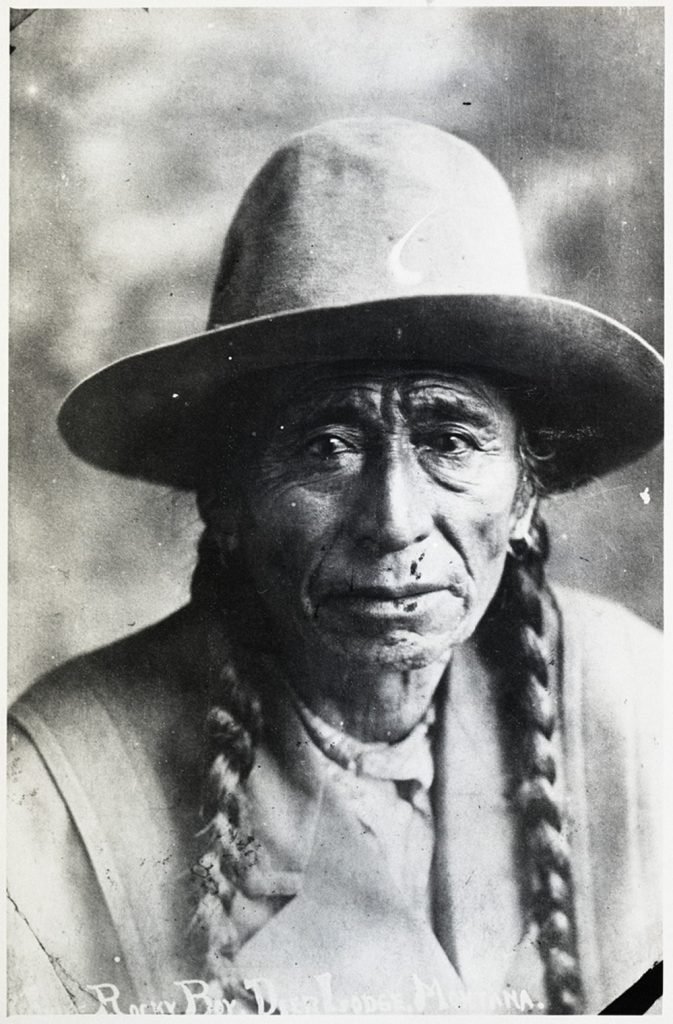
Rocky Boy’s Reservation was established by an Act of Congress on September 7, 1916. The Chippewa Cree Tribe (CCT, governing body) of the Rocky Boy’s Indian Reservation was organized in accordance with the Indian Reorganization Act of 1934 (34 Stat. P. 984) as amended by the Act of June 15, 1935. Thus, the Tribe gained federal recognition and is listed as the Chippewa-Cree Indians of the Rocky Boy’s Reservation, Montana, in the Federal Register, Vol. 68, No. 234, pp. 68179-68184. The governing document is the Constitution and By- Laws of the Chippewa Cree Tribe of the Rocky Boy’s Indian Reservation, Montana enacted in 1935 and amended in 1973.
Along with the passage of the 1934 Indian Reorganization Act, the Chippewa Cree Tribe had the opportunity to acquire the remaining land base, which consisted of area farm operations that had been abandoned during the depression era, thereby bringing the reservation land base to 124,000 surface acres or a total of 193 square miles. Through recent land acquisitions, the reservation land base is approaching 130,000 acres. None of the Reservation land is allotted and all of the land, with exception of the new acquisitions, is held in trust for the full membership of the Tribe.
Historically, the Chippewa lived in bands on both sides of what now divides their aboriginal homelands, the Canadian border and the Great Lakes region. The Cree territory extended from eastern Canada into the Saskatchewan and Alberta provinces. The Tribes began their migrations in the 1700s and 1800s and by the early 1890s had united in a search for a permanent home – a place where children could be brought up in peace, where native religion would be uninterrupted and flourish. The reservation was established through the persistent efforts of Rocky Boy, Little Bear, Kennawash, and Pah-nah-to. The leaders and their people, numbering 450 at the time, had sought refuge in sizable Montana towns, cities, and even other Montana Indian reservations including the Blackfeet, Flathead, and Fort Belknap Reservations.
Rocky Boy’s Indian Reservation was named after Ah-se-ne-win, or Chief Stone Man; “Rocky Boy” evolved from the non-Indian misinterpretation. The inherent beauty of the Rocky Boy’s Reservation lends spiritual sustenance to the people who live here. The natural landmarks and sacred sites give us a place in this world, this ever-changing fast paced world, where we can practice our native ways and bring up our children in peace. The history of the tribal people is a reflection of federal Indian policy, era specific. After living through the depression, a significant number of the first-generation children born on the Rocky Boy’s Reservation were sent to boarding schools or on-reservation schools and while the intention may have been to initiate economic recovery through education, a result was the erosion of the native Cree language. Then the young men were sent to war and service in the armed forces continues to be a source of pride for native people to this day.
In the 1960’s, the Indian Relocation Program provided the means for reservation residents to move to nearby cities such as Denver, Los Angeles, and Seattle. While some of the enrolled tribal members stayed in the big cities, many returned. The stronghold on the Cree language was reinforced during the late 1960s/early 1970s. The Viet Nam War Era brought a heightened awareness to the nation and it was no different at Rocky Boy’s. Traditional values were recovering and there was a resurgence of commitment in learning the native language. The tribal elders created a written [English] version of “The Philosophy of the Chippewa Cree” and Cree language was taught in the schools. Rocky Boy’s established its own school district and the Rocky Boy Health Board was established as the first Indian health board in the nation.
In the tribe’s early years, the Lutheran Church at Rocky Boy’s provided structured activities for the reservation’s children and teenagers, and this continued until the early 1970s. At that time, tribal leaders asked the youth to identify their needs for recreation and other activities. The first youth center was established in 1974 and although protecting children’s interests and tending to their needs has always been an integral part of our life, it was the first time it was formally institutionalized by the tribal government.
The Chippewa Cree Tribe has maintained the traditional spiritual beliefs and cultural ceremonies/activities that have been part of the Tribal mores’ since time immemorial. The traditional Thirst Dance, more commonly known as the Sun Dance, is held the first week of July. The annual Pow-Wow Celebration is held the first week of August. Other cultural events are held throughout the year including the annual Christmas Dance, round dances, ceremonial feasts, revived cultural ceremonies, and cultural camps.

